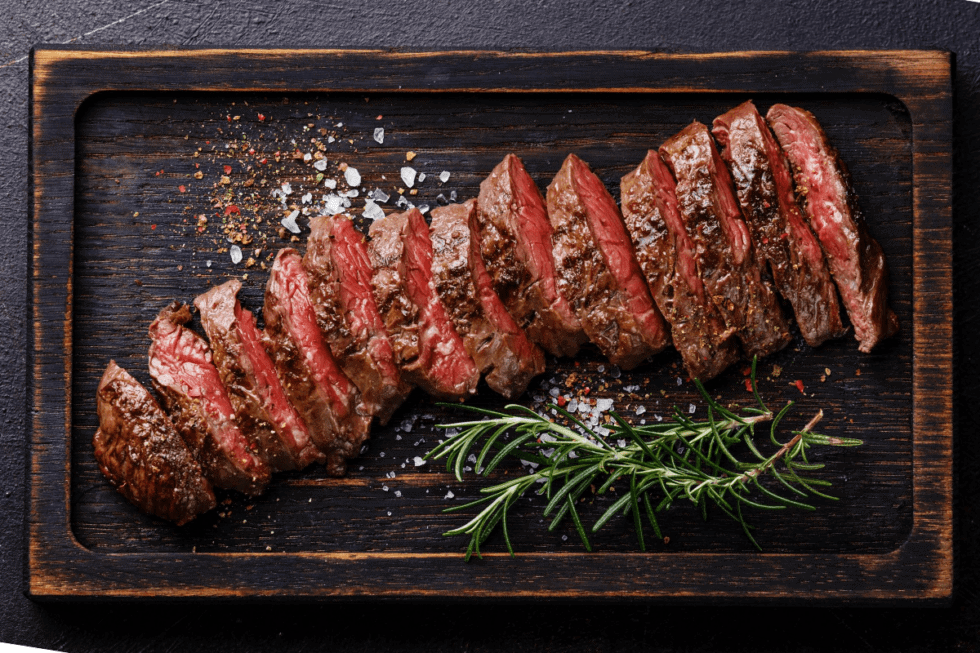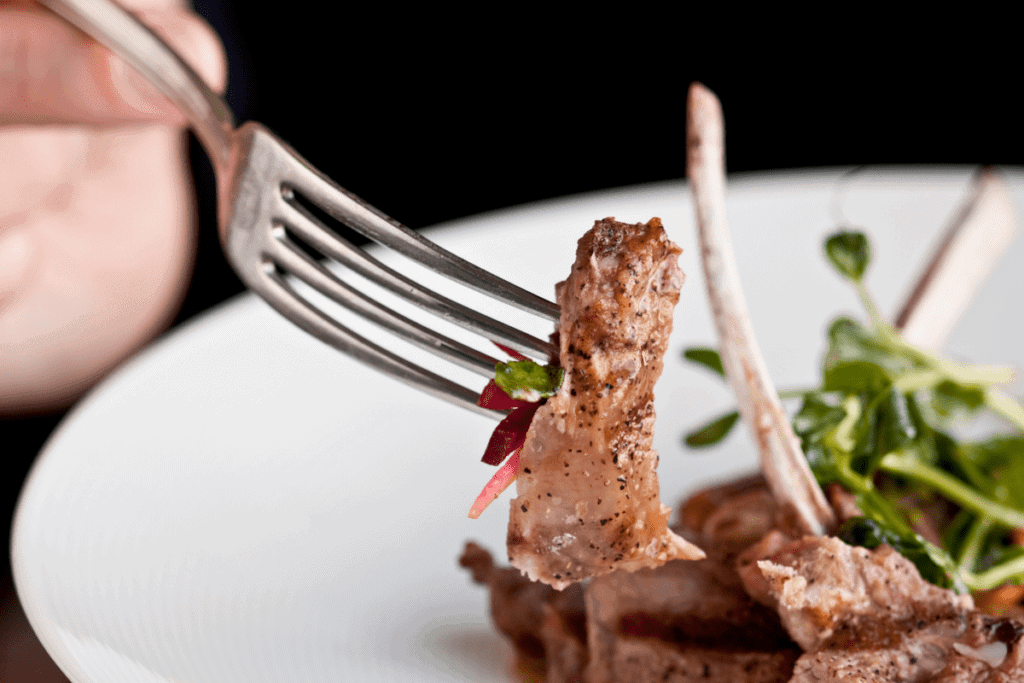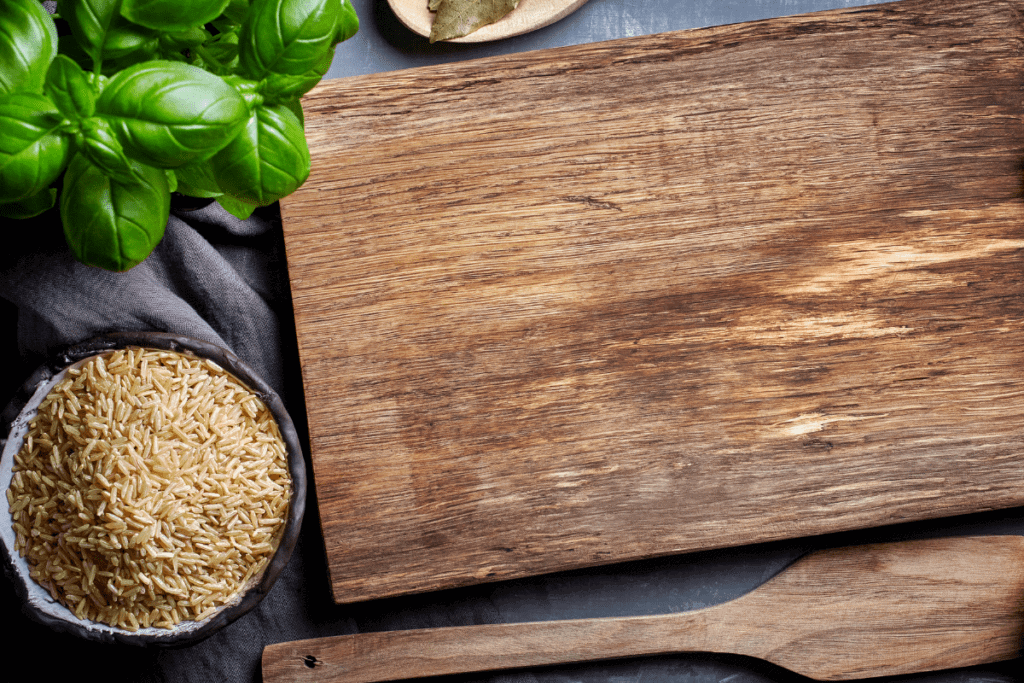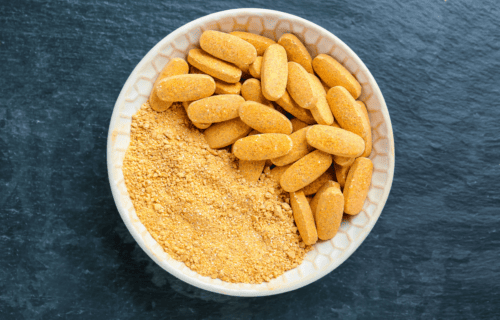
Meat Handling Tips: Preparation, Cooking, and Storage — what to know for those with Mast Cell Activation Syndrome or Histamine Intolerance
When it comes to Mast Cell Activation Syndrome (MCAS) and Histamine Intolerance, how you prepare, cook, and store your food is as important as your food choices.
Histamine Levels can build up if food is mishandled –– either in preparation, cooking, or storage.
I made some mistakes when I was first tackling Mast Cell Activation and Histamine Intolerance.
One of the first rookie mistakes I made was in how I was storing meat.
Before I knew about companies that specialize in low histamine meats, I’d buy meat “fresh” from the butcher. (It wasn’t always as “fresh” as I needed it to be with my Histamine Intolerance issues, unfortunately.)
I figured out pretty quickly that I needed to freeze the store-bought meat as soon as I got home.
But when I was meal planning throughout the week, I’d thaw the meat in the fridge first thing in the morning. That wasn’t the big mistake. Thawing in the fridge can be ok if you do it right.
The mistake was leaving it sitting in the fridge for hours after it had thawed. I’ll tell you more about this in just a bit. And I’ll let you know better ways to thaw. I don’t want you to make my same mistakes!
I hope that by taking out some of the guesswork, you can spend more time enjoying your food and less time stressing.
This week, I’ve put together a few low histamine meal plan tips specifically about handling meat and seafood. I’ve got some tips for you for dining out, too!
It all starts with making good choices. Let’s look at that first.
Making Good Choices – what to know if you have Mast Cell Activation Syndrome or Histamine Intolerance

If you have Mast Cell Activation Syndrome or Histamine Intolerance, the choices you make matter.
You can check out my low histamine food list for an overview of some of the most popular low and high histamine foods.
That list covers all the basic food groups like fruits and vegetables, grains, and proteins. It also looks at beverages, sweeteners, additives, and much more.
Today we are focusing on meat and seafood. With meat and seafood, you want to be extra careful when making selections. The best options are products that are frozen immediately after catch or slaughter. These will have the lowest histamine levels.
Wild-caught seafood or pasture-raised meats will also have a better nutrient profile. For example, the omega 3 (inflammation reducing) to omega 6 (inflammation producing) ratio is much better in wild-caught seafood.
And some people who are very sensitive say they better tolerate meats that are pasture-raised over those that are fed wheat, corn, and soy.
If you want to learn more about what to look for when choosing meat and seafood, check out The Best Low Histamine Meat and Seafood Options – info for those with Mast Cell Activation Syndrome and Histamine Intolerance.
Now, I get my proteins from my favorite producers. Northstar Bison, White Oak Pastures, and Vital Choice offer choices that are:
- Frozen immediately after slaughter/catch
- Grass-fed/Pasture-raised
- Free of hormones & antibiotics
- Non-GMO and preservative free
- 100% Gluten-Free

>>>>Get 10% off Northstar Bison with this link and code MASTCELL360

>>>>Get 10% off first purchase for White Oak Pastures with this link and code MASTCELL360
Be sure to search for their pasture raised corn and soy free chicken!

>>>>Order Low Histamine Seafood from Vital Choice here
I’m thrilled to be able to have so many options now. There was a time in my life where the only animal protein I could eat was chicken.
Now that I have more low-histamine choices, I’m getting a greater variety of nutrients from my food. Not to mention, I enjoy having options every night. These days, I can even eat a burger thanks to being able to get unaged beef and bison.
So, that’s where we start – by choosing good quality, pasture-raised or wild-caught meats if possible. And for the lowest histamine levels, look for products that are frozen right away.
Next, you want to think about how you prepare, cook, and store meats. It can make a difference, especially if you are highly sensitive. The good news — it doesn’t have to be complicated at all.
First, though, let’s talk about how to reintroduce meat into your diet.
Some of you might have been avoiding it because you were having reactions from conventional options.
But now that you have some good choices, you might be considering trying again.
How to Reintroduce Meat – what to know if you have Mast Cell Activation Syndrome or Histamine Intolerance

What if you haven’t been eating meat for a while due to sensitivities? How can you reintroduce it?
First, you want to start by choosing well, like we just talked about. Even with lower histamine meats like chicken, it can be a risk if you are buying from the butcher case at the grocery store.
Again, you can check out this article for more info on why that is:
Second, you’ll want to follow the preparation, storage, and cooking tips I’ll go over in just a bit.
Anything you can do to keep those histamine levels down and mast cell triggers to a minimum is going to be in your favor.
Third, it may help to try meats you haven’t had much of before. This aids in avoiding immune reactions.
You can consider starting with rabbit, lamb, elk, or king salmon if those haven’t been a regular part of your diet in the past.
Rotating nutrient dense foods can also help some people with symptoms related to autoimmunity.
Studies are ongoing, but a rotation diet has been shown to help with inflammation, gut issues, and fatigue in some people.
Fourth, when you do start trying meats again, start with 1 bite and freeze leftovers into small portions. Then a couple days later, if you tolerated the first bite, you could try 2 or 3 bites.
Then if that goes well, a couple days later you may be able to try 4 or 5 bites. You can keep on in this way until eventually you can eat a full serving.
And last, you may need to consider digestive supports during this process, too. I talk about a few of my favorites in this article: Enzymes, Short-Chain Fatty Acids (SCFA’s) and Gut Health in SIBO, Mast Cell Activation Syndrome and Histamine Intolerance.
Briefly, digestive supports can help like this. Studies have shown that digestive enzymes can improve your ability to break down food and absorb nutrients.
Betaine HCL and Pepsin have been shown to help if stomach acid levels are low. If that’s the case, you may not be breaking down proteins in foods very well.
And butyrate is the most beneficial short-chain fatty acid (SCFA). It’s been shown to help lower inflammation and keep the gut healthy.
If you still aren’t tolerating meats, or foods in general, you may need to look at doing some nervous system work to start calming the mast cells.
Learn more about how to do that in our Mast Cell Nervous System Reboot!
Next, let’s look at these storage, preparation, and cooking tips that are important to make sure your meat and seafood choices stay low histamine.
Storage, Preparation, and Cooking Tips for Keeping Meat and Seafood Low Histamine – what to know for those with Mast Cell Activation Syndrome or Histamine Intolerance

I mentioned that I made some mistakes when I was first learning the ins and outs of food prep. Now I know how to make better choices, from start to finish.
It starts with getting good quality foods. Once we get those foods, though, how do we store, prep, and cook them to keep histamine levels low? Let’s look at storage first.
Meat and Seafood Storage — for those with Mast Cell Activation Syndrome or Histamine Intolerance

I can’t say enough about how getting meat frozen and keeping it frozen is really the way to go. Lower temperatures make an environment less hospitable for microorganisms (like histamine-producing bacteria) to grow.
And if you have space for a deep freezer, this can save you money. It will allow you to stock up when there are sales. I always do this when I see a sale on my favorite cuts. Having a dedicated freezer allows me to do this.
Plus, with the meat shortages and shipping issues that have been happening, I like to keep extra on hand. Even though I tolerate more now than I did years ago, I still don’t want to rely on meat from the grocery, if possible.
Quick tip – Get a freezer alarm. It will save you money! There were several times when my freezer door wasn’t fully closing because I had something sticking out too far. Long story short, the food spoiled several times.
Then my husband installed a freezer alarm. It’s really given us peace of mind knowing the door is completely closed and our food won’t be wasted.
But even if you only have the freezer that comes with your refrigerator, freezing is still the best option for storing meats. I keep all meats frozen until I’m ready to cook.
Freezing can slow histamine build up, but it won’t stop it completely. Given enough time, histamine will still build up.
You can find general freezing guidelines online. However, for the sensitive community, these guidelines are often still too long. My top limit is about four months for uncooked meats and two-three weeks for cooked meats.
When I freeze my cooked meats (leftovers), I put them in the freezer immediately. I like using glass containers as well as silicone containers.
Here are some of the ones I’ve used:
I avoid plastic containers as much as possible. Some plastics have been shown to be fine, but others aren’t. I’d rather not take a chance.
That’s because the ones that aren’t safe can leach toxins into the foods and beverages inside. Some of these toxins have been linked to various health problems. And…toxins can activate the mast cells…especially if we have toxic overload.
Now, I frequently get asked if it is really necessary to freeze leftovers immediately. Yes, it is what I do. I recommend it to my clients, too. Modern freezers can handle it.
However, we always need to remember that everyone has a different level of intolerance. Some people may be able to tolerate foods that have cooled in the refrigerator a few hours first. Others will not.
Either way, I would not keep anything at room temperature to cool.
Next, let’s look at some preparation tips
Safely Preparing Meat and Seafood – for those with Mast Cell Activation Syndrome or Histamine Intolerance

When I made the mistake of leaving thawed meat sitting in the fridge, I was allowing bacteria to grow.
I was letting meat sit for hours after it had already been thawed. It was still chilled, so I thought that would be ok. But it didn’t work for me.
Temperature is one of the major factors for bacterial growth.
Typically, the temperature of your refrigerator will be cool enough to slow down a lot of bacterial growth. But freezing temperatures slow it down a lot more. And freezing is less risky.
See, most fridges are kept in the upper thirties. But did you know that the low end of the “danger-zone” for meat is only 40°F? And meat shouldn’t be kept in the danger-zone for more than 2 hours.
And your fridge can fluctuate in temperature based on a lot of different factors. One of them is how often you open your refrigerator door.
I have a friend who has three teen boys. At any given time, it seems like one of them needs a snack. And they decide on the snack by looking at all the contents of the fridge with the door wide open! It drives her crazy! I have to say, when I was a kid, I was guilty of this, too! 😊
But with the door open so much, the refrigerator temperature can rise. For less sensitive people, this might not be a big deal. But when you are just starting out and working hard on regaining your health, you want to minimize risks as much as possible.
And if you have histamine intolerance, that 2-hour danger-zone window for meat will likely be far too long for you.
These guidelines are to help even the most sensitive in our community. I was one of those people. I wish I had known then how little things like this can make such an impact!
You can still thaw meat in the fridge, though. Just don’t leave it sitting. Thaw until it is still just a bit frosty. Then cook it from there.
You also have another option for thawing. You can run hot water over smaller cuts of meat just before you are ready to cook. This is what I often do.
And even better, you may not need to thaw at all! I’ll go over how you can cook from frozen to plate next. I’ll tell you about how to do this in the cooking section.
Related Article: Low Histamine Disaster Prepping for Mast Cell Activation Syndrome and Histamine Intolerance
But first, a couple other basic tips for preparation.
Meat, Seafood, and Clean Cooking Surfaces — for those with Mast Cell Activation Syndrome or Histamine Intolerance

Bacteria can spread from surface to surface. Even for those without Histamine Intolerance or Mast Cell Activation Syndrome, you want to limit the spread of bacteria.
And if you have mast cell issues, you especially do not want to trigger a mast cell response by introducing bacteria into your system.
So, start with clean surfaces. And pay attention to your kitchen tools. For example, make sure you use a good, clean, cutting board for food prep.
There is some debate about whether plastic or wood boards are better for meat. Common thought is that plastic is better. It’s likely people think this because you can stick a plastic board in the dishwasher.
But as I was reading some studies, I learned that wood may be the better way to go!
To break it down, studies treat plastic samples and wooden samples with bacteria. After exposure, they test the number of bacteria that can be recovered under different conditions.
And they found that bacteria in the wood samples were significantly less recoverable than in the plastic samples!
And one study showed that when both wooden and plastic boards were put in the microwave, the bacteria on the wood samples was killed whereas the bacteria on the plastic seemed unaffected!
So, start by getting yourself a good wooden or bamboo cutting board. And once you’ve cut meat on your board, don’t use that board for anything else until it has been properly cleaned.
This is one I like:
There are safety matters to consider when it comes to cleaning your board, too.
To clean your board, don’t dunk it into a basin of water. That will spread bacteria to other dishes you’d wash or soak in that basin. Instead, try this.
First, do a quick rinse with hot water to get the big stuff removed. Then scour it using a brush or sponge. Then to disinfect, you have a variety of options. You can use:
- a food grade hydrogen peroxide (3%)
- organic coconut oil (has been shown to have antibacterial properties)
- castile soap (like Dr. Bronner’s)
Choose one and pour some over the board, letting it sit for a few minutes.
Then rinse again with hot water. Remove excess moisture with a towel and then let it air-dry.
Not all dishes are as porous as a cutting board, so hot water and soap should be fine to remove bacteria. Just be sure to clean anything raw meat has been on before using it for something else.
Let’s look at some cooking tips next.
Cooking Meat and Seafood – what to know if you have Mast Cell Activation Syndrome or Histamine Intolerance

How you cook meat can also affect the histamine levels. The longer something cooks, the higher histamine it will be. Using a slow cooker for 8-12 hours will yield the highest histamine levels. Slow roasting in an oven will also be high histamine.
Some people with Histamine Intolerance or Mast Cell Activation Syndrome can also be sensitive to grilling. This can be both from the fuel (charcoal, propane) and the compounds created from charring. If you are very sensitive, you may want to hold off on grilling as a cooking method.
I prefer using an instant pot to keep histamine levels low. With an instant pot, you can cook something from its frozen state. Meat can cook from frozen to plated in anywhere from 45-90 minutes.
When you cook with an instant pot, you don’t even need to worry about the thawing.
I get asked about cooking with an air-fryer quite a bit, since they are so popular now. I don’t have personal experience cooking with one. However, I have had people tell me they’ve had success with it for both frozen and thawed meats. And I have read product descriptions that say putting in frozen meats is totally fine, too.
Like the instant pot, using an air-fryer can reduce cooking times. And reduced cooking times means lower histamine levels.
Sometimes, you might need a break from cooking, though. In that case, I’ve got one more bonus tip for you on dining out.
Dining Out with Mast Cell Activation Syndrome or Histamine Intolerance

Dining out can pose its own set of challenges. At a restaurant, you have no way of knowing how old the meat or fish is. You can ask what the freshest choices are, but you still won’t know if they are lower histamine to begin with. Chances are they are not.
It is highly likely that the meat is conventionally raised on wheat and corn, too. And it’s likely been treated with hormones or antibiotics. And if it’s beef, it’s almost certainly aged. I’ve never seen unaged beef at a restaurant.
I do enjoy dining out, though. I love trying new flavors and exciting dishes. Plus, I enjoy getting out of the house to socialize with good friends over a lovely meal. And when I’m out, I don’t want to have to leave early because I had a reaction from my food.
These days, I’m able to eat chicken, turkey, and pork at restaurants. I still prefer not to order beef or seafood when I’m out.
But for a long time, I couldn’t order meat at all at a restaurant because of my Histamine Intolerance. Here’s what I did instead when I’d go out.
If I wanted meat with my meal, I just brought my own.
I packed thawed, cooked meat in a small portable container. I’d keep it in a cooler with an ice pack on the car ride over. Then I transferred it to my purse when I arrived.
I’d order what I could from the menu. It was usually a salad or different vegetables. When my food arrived, I’d discreetly add the protein to my plate.
Cool chicken tastes fine on a salad. Just try to get it to your plate within 30 minutes to an hour of taking it out of the cooler.
If it was a restaurant that I knew took longer to bring the meal, I would try to time it so the meat would still be slightly frosty when I took it out of the cooler. Then, by the time my meal got to me, it would be ready to eat.
And when I mix meat with warm foods, it does warm up a little bit, too. It won’t be as hot as if it were coming right from the kitchen, but this does allow me to get my protein intake even if I’m out.
A little bit of planning ahead of time can help, too.
You can go online to see the restaurant’s menu beforehand. If there isn’t a dish you can eat as-is or with simple omissions (I’ll have the chef salad without the tomatoes, please.) — try this.
Make a list on paper of what you can eat from the ingredients you see on the menu.
It might look something like this: olive oil, broccoli, cauliflower, carrots, basil, rosemary, asparagus, garlic, etc. (Be sure to put in seasonings and cooking oils that might not necessarily be listed in the descriptions, like olive oil.)
If you are Oxalate Intolerance, you might want to skip carrots when eating out. Alternatively, you may be able to tolerate carrots if you request that they be boiled and the water discarded.
Also include on your list what common food sensitivities you have: gluten, dairy, soy, corn. Most restaurants will understand what those sensitivities are.
Most restaurants aren’t going to understand histamine intolerance, though (or salicylate intolerance, FODMAP intolerance, or lectin sensitivity). That’s why it will be helpful to list specifically the foods you can have.
Then, you can ask if something can be made using those ingredients that you can eat.
I made lists like this all the time when I couldn’t tolerate very many foods. I found that if I was polite, good quality restaurants were usually very kind about accommodating food sensitivities.
I would often make a joke, too, like – I have some food sensitivities and special requests, but I don’t want to make your job hard, so I promise to be good company. This usually helped break the ice and got a laugh.
Then I told the server I wrote it all down and handed over the list. They usually felt relieved by that. With a list, they didn’t have to remember everything, and they could just hand it to the cook.
That’s my bonus tip of the day for you!
Are you excited to try some new things? I hope so! And I hope these tips will help you, wherever you are on your health journey.
And remember that on your health journey, your histamine intolerance may improve or worsen at times. If you get a GI bug or eat a lot of high histamine foods, your tolerance may be lower. When you get to a good place with your health, you might be able to tolerate more.
I always want to encourage you to do what you can to support your health. Take baby steps if you need to. The important thing is to just keep going.
Calming mast cells using our Nervous System Reboot is a great place to start!
Low Histamine Meat Recipes
- Instant Pot Chicken – Low Oxalate, Low Lectin
- Pork Roast – Low Oxalate, Low Lectin, Low FODMAP, Low Salicylate Options
- Warming Chicken Ginger Soup – Low Oxalate, Low Lectin, Low FODMAP
- Sesame Chicken Salad – Low Oxalate, Low Lectin, Low FODMAP
- Roast Chicken Salad with Rosemary Dressing – Low Oxalate, Low Lectin
- Easy Chicken Tacos – Low FODMAP, Low Lectin, Low Oxalate, Low Salicylate
- Spring Roll Stir Fry – Low Salicylate, Low FODMAP, Low Lectin, Low Oxalate
- Rosemary Roasted Garlic Pork Chops – Low Oxalate, Low Lectin
- Low Histamine Bacon with Southern Greens – Low Oxalate, Low Lectin
- Meat Broth Recipe – Low Oxalate, Low Lectin, Low FODMAP, and Low Salicylate
Some links in this website are affiliate links, which means Mast Cell 360 may make a very small commission if you purchase through the link. It never costs you any more to purchase through the links, and we try to find the best deals we can. We only recommend products that we love and use personally or use in the Mast Cell 360 practice. Any commissions help support the newsletter, website, and ongoing research so Mast Cell 360 can continue to offer you free tips, recipes, and info. Thank you for your support!
References for Meat Handling Tips: Storage and Preparation – what to know for those with Mast Cell Activation Disorder or Histamine Intolerance
Ak, N. O., Cliver, D. O., & Kaspar, C. W. (1994). Cutting Boards of Plastic and Wood Contaminated Experimentally with Bacteria. Journal of food protection, 57(1), 16-22. https://doi.org/10.4315/0362-028X-57.1.16
Bird S. P. (2003). Creatine supplementation and exercise performance: a brief review. Journal of sports science & medicine, 2(4), 123–132.
BSc, A. A., PhD. (2021, June 9). 7 Nutrients That You Can’t Get from Plants. Healthline. Retrieved October 30, 2021, from https://www.healthline.com/nutrition/7-nutrients-you-cant-get-from-plants#7.-Taurine
Cleveland Clinic. (2020, December 15). Fish Faceoff: Wild Salmon vs. Farmed Salmon. Retrieved November 1, 2021, from https://health.clevelandclinic.org/fish-faceoff-wild-salmon-vs-farmed-salmon/
FAO. (1991). Guidelines for slaughtering, meat cutting and further processing. FOOD AND AGRICULTURE ORGANIZATION OF THE UNITED NATIONS. Retrieved October 29, 2021, from https://www.fao.org/3/t0279e/T0279E03.htm
Harvard Health. (2019, December 1). Is plastic a threat to your health? Retrieved November 18, 2021, from https://www.health.harvard.edu/staying-healthy/is-plastic-a-threat-to-your-health
Khoramnia, A., Ebrahimpour, A., Ghanbari, R., Ajdari, Z., & Lai, O. M. (2013). Improvement of medium chain fatty acid content and antimicrobial activity of coconut oil via solid-state fermentation using a Malaysian Geotrichum candidum. BioMed research international, 2013, 954542. https://doi.org/10.1155/2013/954542
Klont, R. (2005, November 21). Pig outlook: Lean hog futures prices in a free-fall. The Pig Site. Retrieved October 30, 2021, from https://www.thepigsite.com/articles/influence-of-ultimate-ph-on-meat-quality-and-consumer-purchasing-decisions
Konijeti, G. G., Kim, N., Lewis, J. D., Groven, S., Chandrasekaran, A., Grandhe, S., Diamant, C., Singh, E., Oliveira, G., Wang, X., Molparia, B., & Torkamani, A. (2017). Efficacy of the Autoimmune Protocol Diet for Inflammatory Bowel Disease. Inflammatory bowel diseases, 23(11), 2054–2060. https://doi.org/10.1097/MIB.0000000000001221
Office of the Commissioner. (2021, February 9). Are You Storing Food Safely? U.S. Food and Drug Administration. Retrieved October 30, 2021, from https://www.fda.gov/consumers/consumer-updates/are-you-storing-food-safely
Park, P. K., & Cliver, D. O. (1996). Disinfection of Household Cutting Boards with a Microwave Oven. Journal of food protection, 59(10), 1049–1054. https://doi.org/10.4315/0362-028X-59.10.1049
Russell, N. J. (2002, November 15). Bacterial membranes: the effects of chill storage and food processing. An overview. ScienceDirect. Retrieved October 30, 2021, from https://www.sciencedirect.com/science/article
/abs/pii/S0168160502001769
Tan, J., McKenzie, C., Potamitis, M., Thorburn, A. N., Mackay, C. R., & Macia, L. (2014). The role of short-chain fatty acids in health and disease. Advances in immunology, 121, 91–119. https://doi.org/10.1016/B978-0-12-800100-4.00003-9
The Department of Food and Nutrition Services. (2013, May). Food Bytes. University of Iowa Health Care. Retrieved October 29, 2021, from https://www.healthcare.uiowa.edu/fns/Nutritional
/Food%20Bytes/2013-05.htm
Valenzuela, C., de Romaña, D. L., Olivares, M., Morales, M. S., & Pizarro, F. (2009). Total iron and heme iron content and their distribution in beef meat and viscera. Biological trace element research, 132(1-3), 103–111. https://doi.org/10.1007/s12011-009-8400-3
Wright, J. & Lenard, L. (2001). Why Stomach Acid is Good For You: Natural Relief From Heartburn, Indigestion, Reflux, & GERD. M. Evans, publisher.
Yago, M. R., Frymoyer, A. R., Smelick, G. S., Frassetto, L. A., Budha, N. R., Dresser, M. J., Ware, J. A., & Benet, L. Z. (2013). Gastric reacidification with betaine HCl in healthy volunteers with rabeprazole-induced hypochlorhydria. Molecular pharmaceutics, 10(11), 4032–4037. https://doi.org/10.1021/mp4003738




Thanks to this blog post I can now enjoy much more choices than just chicken! Beth and the team, thank you so much for everything you do for this community!
Thank you so much for your kind words!